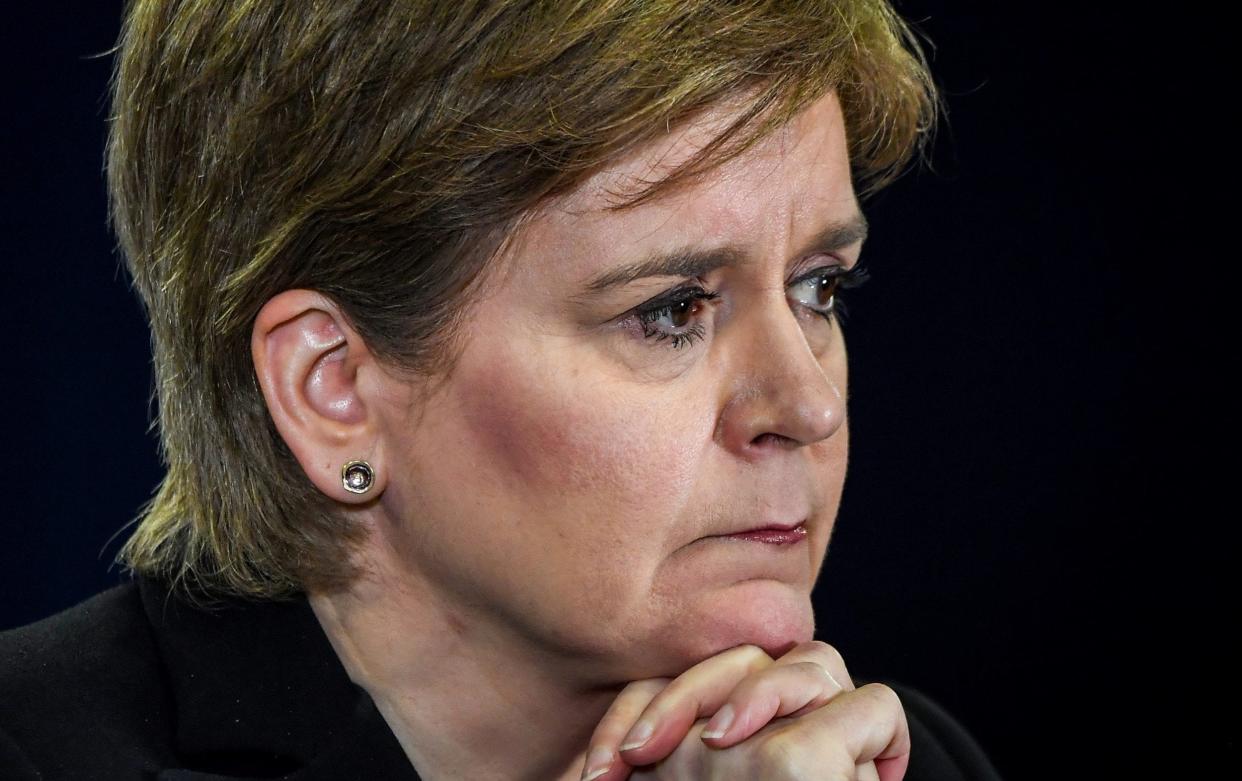Nicola Sturgeon is warned she must raise taxes or cut spending faster than England

Nicola Sturgeon has been warned she may be forced to either slash spending or raise taxes in Scotland as Holyrood faces a tough budget squeeze in the coming years.
Funds available for day-to-day spending, excluding benefits, are on course to shrink by 2pc in real terms by spring 2028, new analysis by the Institute for Fiscal Studies (IFS) shows. The crunch comes as inflation eats away at spending power, the SNP runs down Holyrood's reserves and funding from Westminster slows.
The IFS warned Scotland is facing “stark funding challenges”, with Ms Sturgeon under pressure to raise taxes or cut spending at a faster rate than is predicted in England.
The deterioration of the public purse will leave Holyrood facing tough choices over what to cut, at a time when industry leaders are already describing Scotland’s health service as “broken”.
If spending on health and net-zero commits continue as expected, the SNP would have 13pc less funding for other services by 2027 compared with 2023.
“That 13pc cut will be required for other things unless they change those plans, cut benefits or raise taxes – or unless the UK government gives them more funding,” David Phillips of the IFS said.
The strain on Scotland’s finances comes as Holyrood runs down reserves and with funding from Westminster expected to grow at a slower pace.
“They're making use of £600 million pounds of reserves,” Mr Phillips said, adding: “Those one-off sources of funding will not be available in subsequent years.”
The mechanism around how the devolved governments get funding from Westminster – known as the Barnett effect after the Treasury official who invented the formula – also means in percentage terms the funding grows more slowly than in England over time.
“Over the next few years we expect Scotland's increase in funding to be smaller than the equivalent increase in England,” Mr Phillips said.
“The Barnett formula gives Scotland the same amount in cash terms per person. But because Scotland starts off with a higher level of spending per person, that same cash increase is a smaller percentage increase for Scotland”.
The pace of the “Barnett squeeze” depends on how fast spending rises in England and the rate of population growth in both countries.
Much of the pain will be concentrated over the next two years, with the Edinburgh budget facing a squeeze of 1.6pc when adjusting for inflation in 2023-2024, and then the same again the year after. Funding is then expected to grow modestly in the years after.
While it’s difficult to compare figures across England and Scotland, Mr Phillips said the cuts facing Holyrood are likely deeper than south of the border.
“The overall funding outlook looks slightly more challenging for Scotland than England but it's starting off from a higher level of funding,” he said.
Bee Boileau, another of the research’s authors, said additional funding from the UK Government and a predicted uptick in devolved tax revenues meant the outlook had improved somewhat since last May. “But the picture is far from rosy,” she cautioned.
The predicted 2pc drop in funding over the next five years could even prove to be too optimistic, she said.
“[It] assumes a significant improvement in the performance of Scotland’s devolved income tax revenues – without that, this funding would be close to 5pc lower than this year in 2027–28,” Ms Boileau said.


